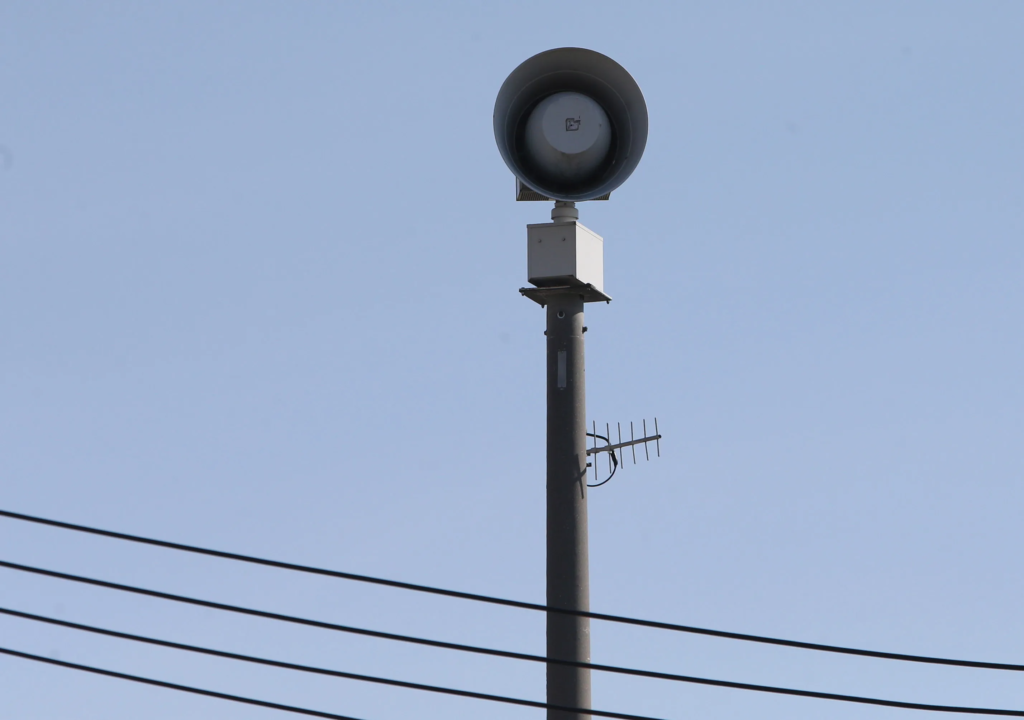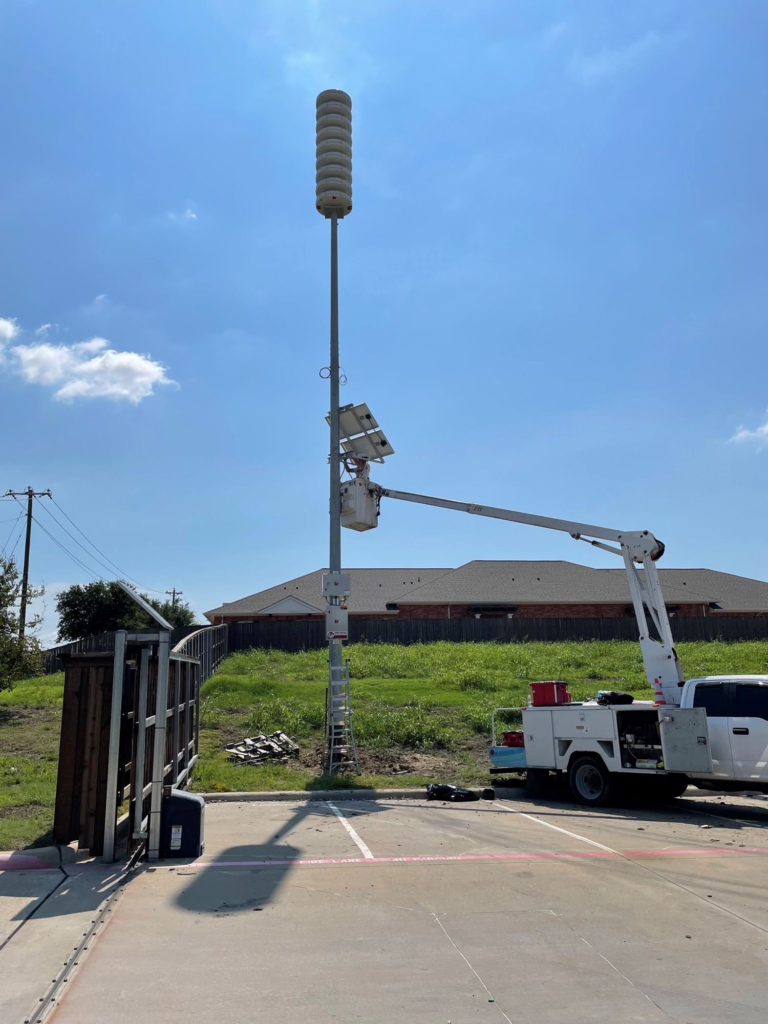Top Features to Look for in Outdoor Commercial Sirens
The sirens in the outdoors prove quite important for protecting communities, workplaces, and public areas against unknown dangers. They alert large crowds to storms, fire outbreaks, industrial accidents, or any other emergency. Consequently, choosing outdoor commercial sirens requires proper consideration of specific features that could make them effective, durable, and suitable for their environment.
Here are the top features to look for when choosing an outdoor commercial siren:
Sound Coverage and Range of Top Features to Look for in Outdoor Commercial Sirens

One of the most critical factors in choosing a Outdoor Commercial Sirens is its sound coverage and range. Sirens are measured by their effective audible range—the distance over which the siren can be heard clearly in Outdoor Commercial Sirens conditions. Calculating the area that needs coverage and choosing a siren with enough power to cover that range effectively is essential.
High-decibel sirens can typically reach distances of up to several miles, depending on environmental conditions. Factors such as buildings, terrain, and weather can influence sound travel, so ensure the siren can cut through ambient noise, especially in noisy industrial or urban areas.
Multi-Tone and Voice Alert Capabilities

Many modern Outdoor Commercial Sirens offer multiple tones, enabling different sounds for various emergencies. For instance, a long, continuous tone could signal a weather alert, while a pulsed tone could indicate an industrial hazard or evacuation.
Some Outdoor Commercial Sirens also feature voice alert capabilities. This feature allows emergency personnel to broadcast specific instructions or real-time information, which can be especially valuable in situations where people need guidance on how to respond to the alert. Voice alerts can help avoid confusion and provide clarity, which is especially useful for directing large groups.
Durability and Weather Resistance

Outdoor Commercial Sirens are continuously exposed to the elements, so they must be built to withstand harsh environmental conditions, including rain, extreme temperatures, wind, and sunlight. Look for sirens that are rated with Ingress Protection (IP) standards or have an IP rating indicating their resistance to dust and water. A rating of IP65 or higher generally indicates robust weather resistance is suitable for outdoor environments.
Additionally, UV-resistant materials, rustproof housing, and heavy-duty construction can enhance a siren’s durability, ensuring reliable performance over time with minimal maintenance.
Reliable Power Source Options
Power reliability is crucial for outdoor sirens, particularly in emergencies. Many Outdoor Commercial Sirens are designed with multiple power options, including electrical mains, battery backup, and even solar power. Solar-powered sirens, in particular, are gaining popularity due to their low maintenance needs and eco-friendliness.
A battery backup system is essential to ensure that the siren can function even in power outages, which are common during severe weather events. Make sure the siren has a power solution that aligns with your facility’s needs and location for uninterrupted operation.
Remote Activation and Control
The ability to activate and control the siren remotely is a valuable feature for commercial setups. Remote control capabilities, often through a centralized system or even a mobile application, allow designated personnel to trigger the siren from a safe distance. This feature is essential for quickly deploying alerts without risking anyone’s safety.
Some sirens also offer programmable activation schedules, which can automatically test the siren at designated times to ensure it’s always operational. Remote monitoring of battery levels and other diagnostics can also improve reliability and maintenance planning.
System Integration and Compatibility
In many cases, outdoor commercial sirens need to work as part of a broader emergency communication and alert system. Sirens that can integrate with existing systems, such as PA systems, fire alarms, or even building management software, add considerable value. System integration enables a coordinated response to emergencies, reducing confusion and improving the speed of response.
Look for sirens that support common communication protocols and open standards. This will make it easier to connect the siren with other devices and software in your emergency management infrastructure.
Ease of Installation and Maintenance
Since outdoor sirens often need to be installed at significant heights or hard-to-reach locations, ease of installation is an essential consideration. Ideally, the siren should have mounting options compatible with various structures like poles, walls, and rooftops. Modular designs that allow for straightforward attachment or replacement of parts can make installation and future maintenance simpler.
Additionally, opt for sirens with accessible maintenance options, such as front-facing access points for battery replacement or diagnostics checks. This can save both time and money in the long run and ensure the siren remains operational when it’s needed most.
Frequency Adjustability and Sound Directionality
Some Outdoor Commercial Sirens offer frequency adjustability, which enables users to modify the tone’s pitch based on the environment. For example, a higher frequency might work better in a quiet suburban area, while a lower frequency might carry better in a dense urban environment. Adjusting the frequency can improve sound penetration, ensuring alerts are effective in the surrounding area.
Directionality is another beneficial feature. Omni-directional sirens broadcast sound in all directions, which is ideal for wide-open spaces or when the siren must cover an entire area equally. Directional sirens, on the other hand, focus sound toward specific areas and are more effective for targeted alerts.
Strobe Lights or Visual Alert Integration
While sound is the primary method of alert for sirens, visual cues are often necessary, especially in noisy environments where the siren might be hard to hear. Many Outdoor Commercial Sirens offer optional strobe lights or can integrate with visual alert systems to provide a combined audio-visual alert.
Flashing lights grab attention and signal people who may not hear the siren due to hearing impairments, noise-canceling headphones, or background noise. Adding a visual component to the siren’s alert system can enhance overall effectiveness and inclusivity in crowded or noisy outdoor spaces.
Battery Life and Power Efficiency
Battery life and power efficiency are critical for sirens with battery backup systems. A long battery life ensures the siren can function through extended emergencies, while energy-efficient models reduce the frequency of battery replacements, lowering maintenance costs.
Consider the average battery life in standby mode and during active use. Low-power consumption sirens and those with rechargeable batteries provide long-term reliability while reducing the need for frequent battery checks or replacements.
Regulatory Compliance and Certifications
Compliance with industry regulations and safety standards is crucial for any emergency alert system. Depending on your location and industry, there may be specific guidelines governing the use of Outdoor Commercial Sirens. Look for sirens that are compliant with standards such as the National Fire Protection Association (NFPA) standards in the United States, the European Union’s CE marking for health and safety, or local standards specific to your region.
Certifications like UL (Underwriters Laboratories) can also indicate that the siren meets rigorous safety and performance requirements, giving you confidence that it will work reliably in emergencies.
Customizability and Expandability
Commercial sirens that allow for future expansion or customization can grow with your needs. If your coverage area increases over time or you need additional functionality, a modular siren system can accommodate such changes without requiring a complete overhaul.
Customizable features such as tone selection, voice modules, or extended battery options provide flexibility, allowing you to tailor the siren to specific situations and environments as your requirements evolve.
Conclusion
Outdoor commercial sirens can be picked based on several aspects, starting from sound coverage and toughness to power sources and remote control. Each aspect plays an important role in ensuring people are alerted appropriately in case of emergencies and thereby have enough time to clear or take action in advance. Careful thought to these core features can allow a siren system that not only meets current needs but also will transition with potential changes to ensure robust, reliable alerting for years to come.
